
The Maze Prison escape (known to Irish republicans as the Great Escape) took place on 25 September 1983 in County Antrim, Northern Ireland. HM Prison Maze (previously known as Long Kesh) was a maximum security prison considered to be one of the most escape-proof prisons in Europe, and held prisoners convicted of taking part in armed paramilitary campaigns during the Troubles. In the biggest prison escape in British history, 38 Provisional Irish Republican Army (IRA) prisoners, who had been convicted of offenses including murder and causing explosions, escaped from H-Block 7 (H7) of the prison. One prison officer died of a heart attack as a result of the escape and twenty others were injured, including two who were shot with guns that had been smuggled into the prison. The escape was a propaganda coup for the IRA, and a British government minister faced calls to resign. The official inquiry into the escape placed most of the blame onto prison staff, who in turn blamed the escape on political interference in the running of the prison.

Previous escapes


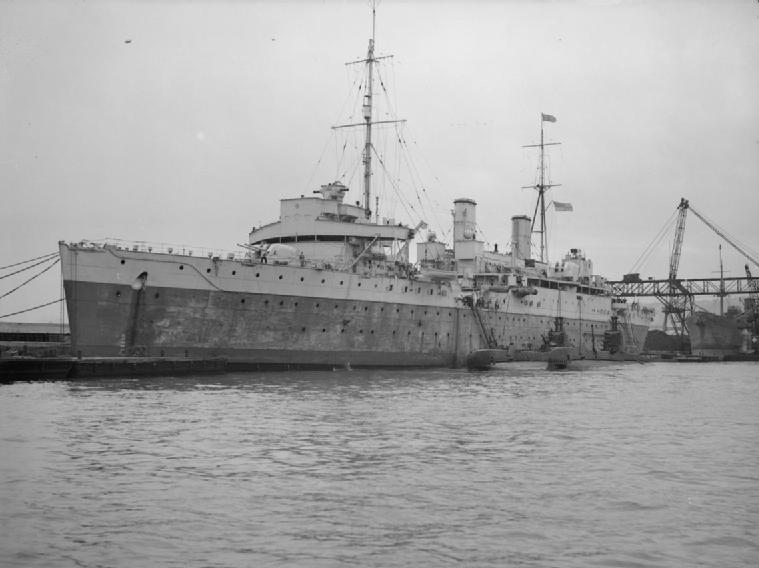
On 17 January 1972, seven internees escaped from the prison ship HMS Maidstone by swimming to freedom, resulting in them being dubbed the "Magnificent Seven".[1][2]

On 31 October 1973, three leading IRA members, including former Chief of Staff Seamus Twomey, escaped from Mountjoy Prison in Dublin when a helicopter landed in the exercise yard of the prison. Irish band The Wolfe Tones wrote a song celebrating the escape called "The Helicopter Song", which topped the Irish popular music charts.[3][4][5]

19 IRA members escaped from Portlaoise Jail on 18 August 1974 after overpowering guards and using gelignite to blast through gates,[6] and 33 prisoners attempted to escape from Long Kesh on 6 November 1974 after digging a tunnel. IRA member Hugh Coney was shot dead by a sentry, 29 other prisoners were captured within a few yards of the prison, and the remaining three were back in custody within 24 hours.[5][7] In March 1975, ten prisoners escaped from the courthouse in Newry while on trial for attempting to escape from Long Kesh.[5]


The escapees included Larry Marley, who would later be one of the masterminds behind the 1983 escape.[8][9] On 10 June 1981, eight IRA members on remand, including Angelo Fusco, Paul Magee and Joe Doherty, escaped from Crumlin Road Jail. The prisoners took prison officers hostage using three handguns that had been smuggled into the prison, took their uniforms and shot their way out of the prison.[10]


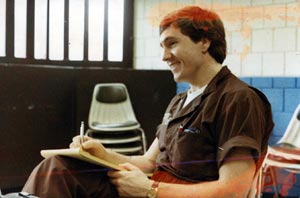
1983 escape

HM Prison Maze was considered one of the most escape-proof prisons in Europe. In addition to 15-foot (4.6 m) fences, each H-Block was encompassed by an 18-foot (5.5 m) concrete wall topped with barbed wire, and all gates on the complex were made of solid steel and electronically operated.[11]
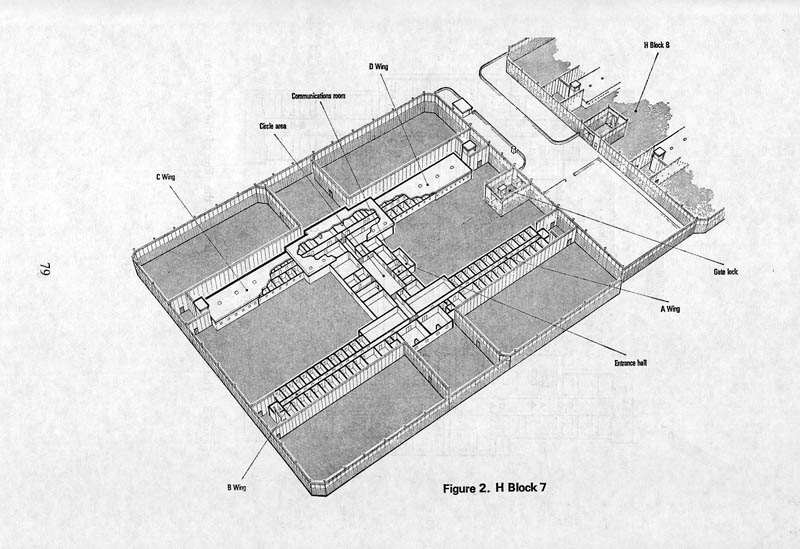
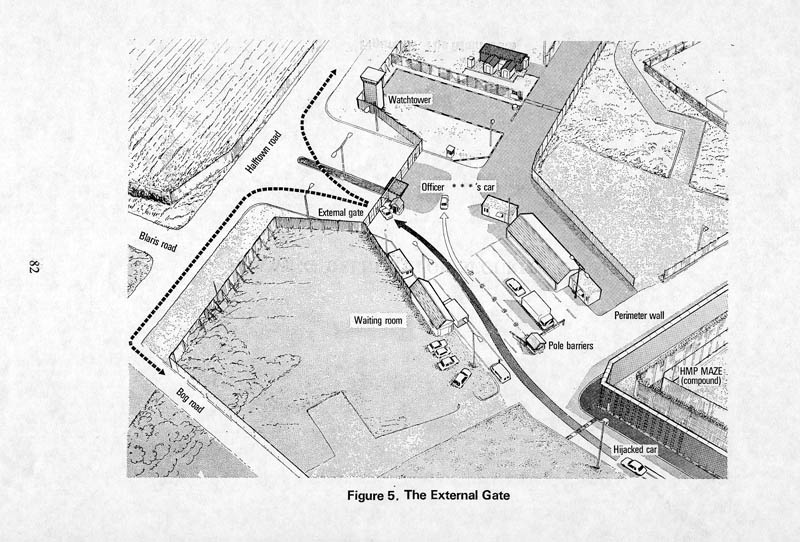
Prisoners had been planning the escape for several months. Bobby Storey and Gerry Kelly had started working as orderlies in H7, which allowed them to identify weaknesses in the security systems, and six handguns had been smuggled into the prison.[8] Shortly after 2:30 pm on 25 September, prisoners seized control of H7 by simultaneously taking the prison officers hostage at gunpoint in order to prevent them from triggering an alarm. One officer was stabbed with a craft knife, and another was knocked down by a blow to the back of the head. One officer who attempted to prevent the escape was shot in the head by Gerry Kelly, but survived.[8][12] By 2:50 pm the prisoners were in total control of H7 without an alarm being raised. A dozen prisoners also took uniforms from the officers, and the officers were also forced to hand over their car keys and details of where their cars were, for possible later use during the escape.[12]
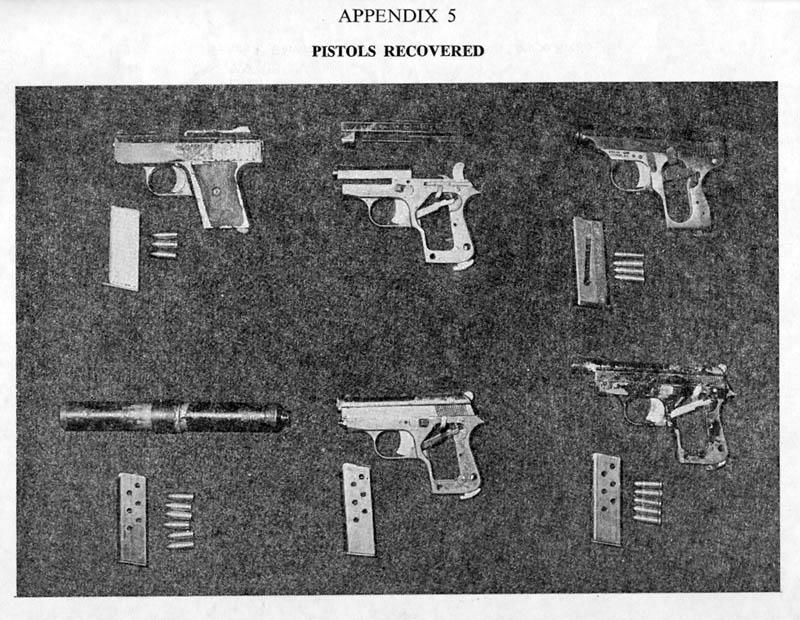
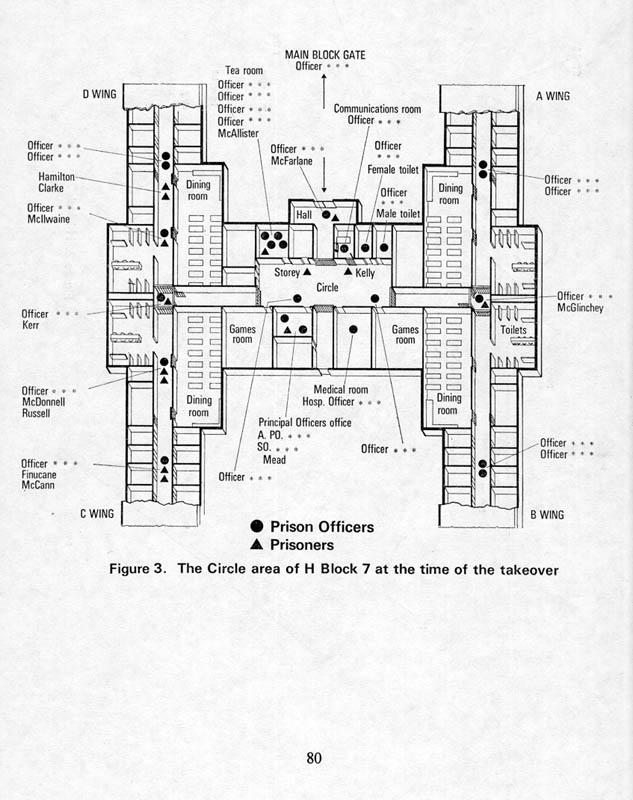
A rear guard was left behind to watch over hostages and keep the alarm from being raised until they believed the escapees were clear of the prison, when they returned to their cells.[12] At 3:25 pm, a lorry delivering food supplies arrived at the entrance to H7, where Brendan McFarlane and other prisoners took the occupants hostage at gunpoint and took them inside H7. The lorry driver was told the lorry was being used in the escape, and he was instructed what route to take and how to react if challenged.[12] Bobby Storey told the driver that "This man [Gerry Kelly] is doing 30 years and he will shoot you without hesitation if he has to. He has nothing to lose".[8]


At 3:50 pm the prisoners left H7, and the driver and a prison orderly were taken back to the lorry, and the driver's foot tied to the clutch. 37 prisoners climbed into the back of the lorry, while Gerry Kelly lay on the floor of the cab with a gun pointed at the driver, who was also told the cab had been booby trapped with a hand grenade.[12] At nearly 4:00 pm the lorry drove towards the main gate of the prison, where the prisoners intended to take over the gatehouse. Ten prisoners dressed in guards' uniforms and armed with guns and chisels dismounted from the lorry and entered the gatehouse, where they took the officers hostage.[12]
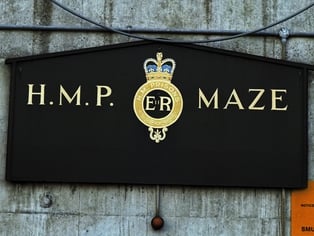
At 4:05 pm the officers began to resist, and an officer pressed an alarm button. When other staff responded via an intercom, a senior officer said while being held at gunpoint that the alarm had been triggered accidentally. By this time the prisoners were struggling to maintain control in the gatehouse due to the number of hostages.[12] Officers arriving for work were entering the gatehouse from outside the prison, and each was ordered at gunpoint to join the other hostages. Officer James Ferris ran from the gatehouse towards the pedestrian gate attempting to raise the alarm, pursued by Dermot Finucane. Ferris had already been stabbed three times in the chest, and before he could raise the alarm he collapsed.[12]


Finucane continued to the pedestrian gate where he stabbed the officer controlling the gate, and two officers who had just entered the prison. This incident was seen by a soldier on duty in a watch tower, who reported to the Army operations room that he had seen prison officers fighting. The operations room telephoned the prison's Emergency Control Room (ECR), which replied that everything was all right and that an alarm had been accidentally triggered earlier.[12]

At 4:12 pm the alarm was raised when an officer in the gatehouse pushed the prisoner holding him hostage out of the room and telephoned the ECR. However, this was not done soon enough to prevent the escape. After several attempts the prisoners had opened the main gate, and were waiting for the prisoners still in the gatehouse to rejoin them in the lorry. At this time two prison officers blocked the exit with their cars, forcing the prisoners to abandon the lorry and make their way to the outer fence which was 25 yards away.[12]

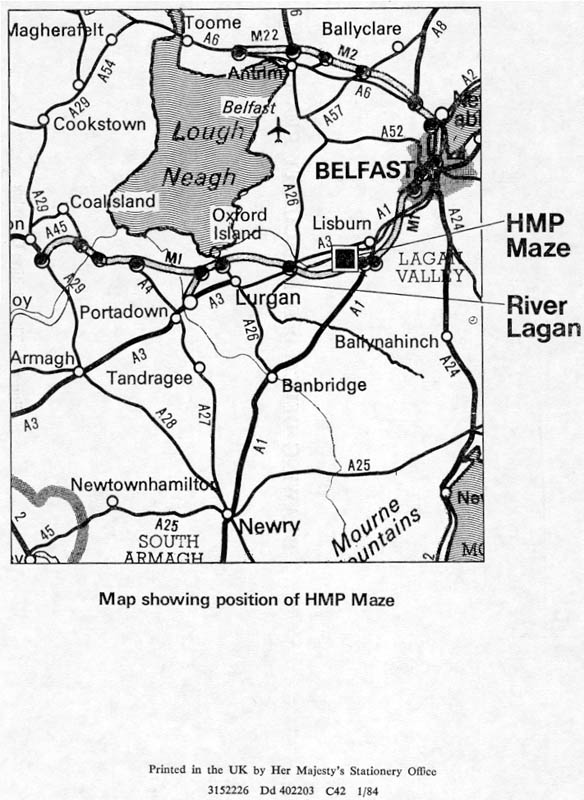
Four prisoners attacked one of the officers and hijacked his car, which they drove towards the external gate. They crashed into a car near the gate and abandoned the car. Two escaped through the gate, one was captured exiting the car, and another was captured after being chased by a soldier.[12] At the main gate, a prison officer was shot in the leg while chasing the only two prisoners who had not yet reached the outer fence. The prisoner who fired the shot was captured after being shot and wounded by a soldier in a watch tower, and the other prisoner was captured after falling. The other prisoners escaped over the fence, and by 4:18 pm the main gate was closed and the prison secured, after 35 prisoners had successfully breached the perimeter of the prison.[12] The escape was the biggest in British history, and the biggest in Europe since World War II.[11][13]


Outside the prison the IRA had planned a logistical support operation involving 100 armed members,[14] but due to a miscalculation of five minutes the prisoners found no transport waiting for them and were forced to flee across fields or hijack vehicles.[8][15] The British Army and Royal Ulster Constabulary immediately activated a contingency plan, and by 4:25 pm a cordon of vehicle check points were in place around the prison, and others were later in place in strategic positions across Northern Ireland, resulting in the recapture of one prisoner at 11:00 pm. Twenty prison officers were injured during the escape, thirteen were kicked and beaten, four stabbed, two shot, and another, James Ferris, died after suffering a heart attack during the escape.[8][12]
Reaction

The escape was a propaganda coup and morale boost for the IRA, with Irish republicans dubbing it the "Great Escape".[8][11] Leading Unionist Ian Paisley called on Nicholas Scott, the Parliamentary Under-Secretary of State for Northern Ireland, to resign. The British Prime Minister Margaret Thatcher made a statement in Ottawa during a visit to Canada, saying "It is the gravest [breakout] in our present history, and there must be a very deep inquiry".[11] The day after the escape, Secretary of State for Northern Ireland James Prior announced an inquiry would be headed by Her Majesty's Chief Inspector of Prisons, James Hennessy.[11][16] The Hennessy Report was published on 26 January 1984 placing most of the blame for the escape on prison staff, and made a series of recommendations to improve security at the prison.[12][17]
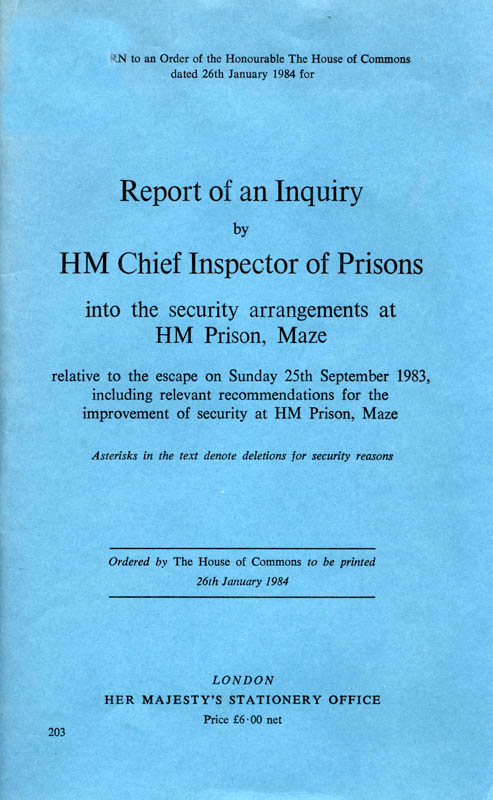
The report also placed blame with the designers of the prison, the Northern Ireland Office and successive prison governors who had failed to improve security.[12] James Prior announced the prison's governor had resigned, and that there would be no ministerial resignations as a result of the report's findings.[17][18] Four days after the Hennessy Report was published, then Minister for Prisons Nicholas Scott dismissed allegations from the Prison Governors Association and the Prison Officers Association that the escape was due to political interference in the running of the prison.[17] On 25 October 1984, nineteen prisoners appeared in court on charges relating to the death of prison officer James Ferris, sixteen of them charged with his murder.[8][17] A pathologist stated that the stab wounds Ferris suffered would not have killed a healthy man. The judge acquitted all sixteen as he could not correlate the stabbing to the heart attack.[8]
Escapees
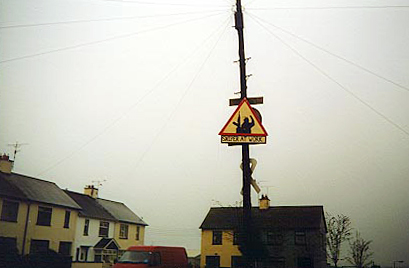
Fifteen escapees were captured on the first day, including four who were discovered hiding underwater in a river near the prison using reeds to breathe.[11][15] Four more escapees were captured over the next two days, including Hugh Corey and Patrick McIntyre who were captured following a two-hour siege at an isolated farmhouse.[11] Out of the remaining 19 escapees, 18 ended up in the republican stronghold of South Armagh where two members of the IRA's South Armagh Brigade were in charge of transporting them to safehouses,[19] and they were given the option of either returning to active service in the IRA's armed campaign or a job and new identity in the United States.[20]

Escapee Kieran Fleming drowned in the Bannagh River near Kesh in December 1984, while attempting to escape from an ambush by the Special Air Service (SAS) in which fellow IRA member Antoine Mac Giolla Bhrighde was killed.[21]
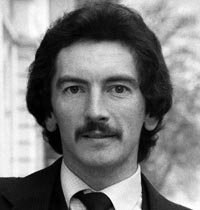

![[ image: Magee: Murder plans]](http://news.bbc.co.uk/olmedia/300000/images/_301223_magee150.jpg)
Gerard McDonnell was captured in Glasgow in June 1985 along with four other IRA members including Brighton bomber Patrick Magee, and convicted of conspiring to cause sixteen explosions across England.[22] Séamus McElwaine was killed by the SAS in Roslea in April 1986,[23] and Gerry Kelly and Brendan McFarlane were returned to prison in December 1986 after being extradited from Amsterdam where they had been arrested in January 1986, leaving twelve escapees still on the run.[24]



Robert Russell was extradited back to Northern Ireland in August 1988 after being captured in Dublin in 1984,[27][28] and Paul Kane followed in April 1989.[29] In March 1990 the Supreme Court of Ireland in Dublin blocked the extradition of James Pius Clarke and Dermot Finucane on the grounds they "would be probable targets for ill-treatment by prison staff" if they were returned to prison in Northern Ireland.[30][31]

Kevin Barry Artt, Pól Brennan, James Smyth and Terrence Kirby, collectively known as the "H-Block 4", were arrested in the United States between 1992 and 1994 and fought lengthy legal battles against extradition.[32][33] Smyth was extradited back to Northern Ireland in 1996 and returned to prison, before being released in 1998 as part of the Good Friday Agreement.[33] Tony Kelly was arrested in Letterkenny, County Donegal in October 1997,[34] and fought successfully against extradition.[35] In 2000 the British government announced that the extradition requests for Brennan, Artt and Kirby were being withdrawn as part of the Good Friday Agreement.[36] The men officially remain fugitives, but in 2003 the Prison Service said they were not being "actively pursued".[37]
Dermot McNally, who had been living in the Republic of Ireland and was tracked down in 1996,[33] and Dermot Finucane received an amnesty in January 2002, allowing them to return to Northern Ireland if they wished to.[38] However Tony McAllister was not granted an amnesty which would have allowed him to return to his home in Ballymurphy.[39] As of September 2003 two escapees, Gerard Fryers and Séamus Campbell, had not been traced since the escape.[40] Up to 800 republicans held a party at a hotel in Donegal in September 2003 to celebrate the 20th anniversary of the escape, which was described by Ulster Unionist Party MP Jeffrey Donaldson as "insensitive, inappropriate and totally unnecessary".[37]
![[ image: Kevin Artt: Convicted of murder]](http://news.bbc.co.uk/olmedia/190000/images/_190327_artt150.jpg)
Subsequent escape attempts
On 10 August 1984 loyalist prisoner Benjamin Redfern, a member of the Ulster Defence Association, attempted to escape from HM Prison Maze by hiding in the back of a refuse lorry, but died after being caught in the crushing mechanism.[41][42] On 7 July 1991 IRA prisoners Nessan Quinlivan and Pearse McAuley escaped from HM Prison Brixton, where they were being held on remand. They escaped using a gun that had been smuggled into the prison, wounding a motorist as they fled after escaping the prison.[43][44] On 9 September 1994 six prisoners including an armed robber, Danny McNamee and four IRA members including Paul Magee, escaped from HM Prison Whitemoor.[45]
The prisoners, in possession of two guns that had been smuggled into the prison, scaled the prison walls using knotted sheets.[45][46] A guard was shot and wounded during the escape, and the prisoners were captured after being chased across fields by guards and the police.[46] In March 1997 a 40-foot (12 m) tunnel was discovered in H7 at HM Prison Maze. The tunnel was fitted with electric lights, and was 80 feet (24 m) from the outside wall having already breached the block's perimeter wall.[47] On 10 December 1997 IRA prisoner Liam Averill, serving a life sentence after being convicted of the murder of two Protestants, escaped from HM Prison Maze dressed as a woman.[47] Averill mingled with a group of prisoners' families attending a Christmas party, and escaped on the coach taking the families out of the prison.[47][48]
![[ image: Danny McNamee: Broke out of Whitemoor in 1994]](http://news.bbc.co.uk/olmedia/235000/images/_236912_mac150.jpg)
Taken from: https://en.wikipedia.org/wiki/Maze_Prison_escape [25.09.2013]
References
1.
^ Jump
up to: a b
"Extracts
from 'Internment' by John McGuffin (1973)". CAIN. Retrieved
2007-08-29.
2.
Jump
up ^ Aran
Foley (18 January 2007). "The
Magnificent Seven". An
Phoblacht. Retrieved 2007-08-29.
3.
Jump
up ^ Louisa
Wright (12 November 1973). "The
Canny Copter Caper". TIME.
Retrieved 2007-08-29.
4.
Jump
up ^ Art Mac
Eoin (1 November 2001). "Chopper
escape from Mountjoy". An Phoblacht. Retrieved 2007-08-29.
5.
^ Jump
up to: a b
c
"IRA - the people's
army". An Phoblacht. 28 July 2005. Retrieved 2007-08-29.
7.
Jump
up ^ "Today
In Pictures". The Belfast Telegraph. Archived from the
original on 2007-09-30. Retrieved 2007-08-29.
8.
^ Jump
up to: a b
c
d
e
f
g
h
i
David McKittrick (17 September 2003). "The
great escape". The
Independent. Archived from the
original on November 15, 2007. Retrieved 2007-08-29.
11. ^ Jump
up to: a b
c
d
e
f
g
Louisa Wright (10 October 1983). "The
I.R.A.'s "Great Escape"". TIME. Retrieved 2007-08-29.
12. ^ Jump
up to: a b
c
d
e
f
g
h
i
j
k
l
m
n
o
"Report of
Inquiry into the Security Arrangements at HM Prison, Maze, Hennessy Report,
1984". CAIN. Retrieved 2007-08-29.
13. Jump up ^ O'Day, Alan (1997). Political
Violence in Northern Ireland: Conflict and Conflict Resolution. Praeger
Publishers. p. 88. ISBN 978-0-275-95414-7.
14. Jump up ^ McKevoy, Kieran (2001). Paramilitary
Imprisonment in Northern Ireland: Resistance, Management and Release. Oxford University Press. p. 68. ISBN 978-0-19-829907-3.
15. ^ Jump
up to: a b
c
"1983:
Dozens escape in Maze break-out". BBC. 1983-09-25.
Retrieved 2007-08-29.
17. ^ Jump
up to: a b
c
d
"A Chronology of
the Conflict - 1984". CAIN. Retrieved 2007-08-29.
18. Jump up ^ Oonagh Gay and Thomas Powell (5
April 2004). Individual
ministerial responsibility- issues and examples (PDF). House of Commons. p. 22. Retrieved
2007-11-08.
19. Jump up ^ Harnden,
Toby (1999). Bandit Country. Hodder & Stoughton. pp. 210–211. ISBN 0-340-71736-X.
20. Jump up ^ Moloney, Ed
(2002). A Secret History of the IRA. Penguin
Books. p. 291. ISBN 0-14-101041-X.
21. Jump up ^ Urban, Mark (1993). Big Boys'
Rules: SAS and the Secret Struggle Against the IRA. Faber
and Faber. pp. 191–193. ISBN 0-571-16809-4.
24. Jump up ^ "Dutch
Extradite Two I.R.A. Fugitives". The New York Times. 4 December 1986.
Retrieved 2007-08-29.
26. Jump up ^ Art Mac Eoin (30 November 2001).
"Nationwide
wave of repression". An Phoblacht. Retrieved 2007-08-29.
27. Jump up ^ Scott MacLeod (5 September
1988). "Northern
Ireland From Here to Eternity". TIME. Retrieved 2007-08-29.
29. Jump up ^ "Adjournment
Debate. - Extradition Case". Dáil
Éireann. 13 April 1989. Retrieved 2007-08-29.
30. Jump up ^ "House
of Commons Hansard Debates for 14 Mar 1990". House of Commons. 14
March 1990. Retrieved 2007-08-29.
31. Jump up ^ "Major
controversy over extradition". The Irish Emigrant. 19 March
1990. Archived from the
original on September 27, 2007. Retrieved 2007-08-29.
33. ^ Jump
up to: a b
c
Karen McElrath. "'Extradition'
from Unsafe Haven". CAIN. Retrieved 2007-08-29.
34. Jump up ^ Sean Mac Bradaigh (23 October
1997). "Extradition
aimed at undermining peace process". An Phoblacht. Retrieved
2007-08-29.
35. Jump up ^ "Extradition
(European Union Conventions) Bill, 2001: Second Stage". Dáil Éireann.
23 November 2001. Retrieved 2007-08-29.
36. Jump up ^ Jim Dee (18 June 2008). "Brennan in
Texas prison lockdown". The
Irish Echo. Retrieved 2008-06-20.[dead link]
37. ^ Jump
up to: a b
"Maze
break-out 'party' condemned". BBC. 19 September 2003. Retrieved
2007-08-29.
38. Jump up ^ "House
of Commons Hansard Debates for 9 Jan 2002 (pt 28)". House of Commons.
9 January 2002. Retrieved 2007-08-29.
39. Jump up ^ Allison Morris (28 February
2002). "Attwood
accuses Sinn Féin of blatant double standards over Exiles' amnesty".
Irelandclick.com. Retrieved 2007-08-29.
40. Jump up ^ Sinead King (14 September 2003).
"Maze
Escape Party Row". The People.
Retrieved 2007-08-29.
41. Jump up ^ Malcolm Sutton. "An Index of Deaths
from the Conflict in Ireland". CAIN. Retrieved 2007-11-08.
42. Jump up ^ Owen Bowcott (5 April 2007). "Thirty
years on, the Maze reveals a secret". London: The
Guardian. Retrieved 2007-11-08.
44. Jump up ^ "2
Irishmen Shoot Their Way Out of a Prison in London". The New York Times. 8 July 1991. Retrieved
2007-11-08.
45. ^ Jump
up to: a b
"House
of Commons Hansard Debates for 19 Dec 1994". House of Commons. 19
December 1994. Retrieved 2007-11-08.
46. ^ Jump
up to: a b
"Inquiry
over helicopter escape-plot at Whitemoor inquiry at Whitemoor". The
Independent. 23 March 1998. Archived from the
original on November 15, 2007. Retrieved 2007-11-08.
47. ^ Jump
up to: a b
c
"The Maze - home to
paramilitaries". BBC. 16 March 1998. Retrieved 2007-11-08.

No comments:
Post a Comment